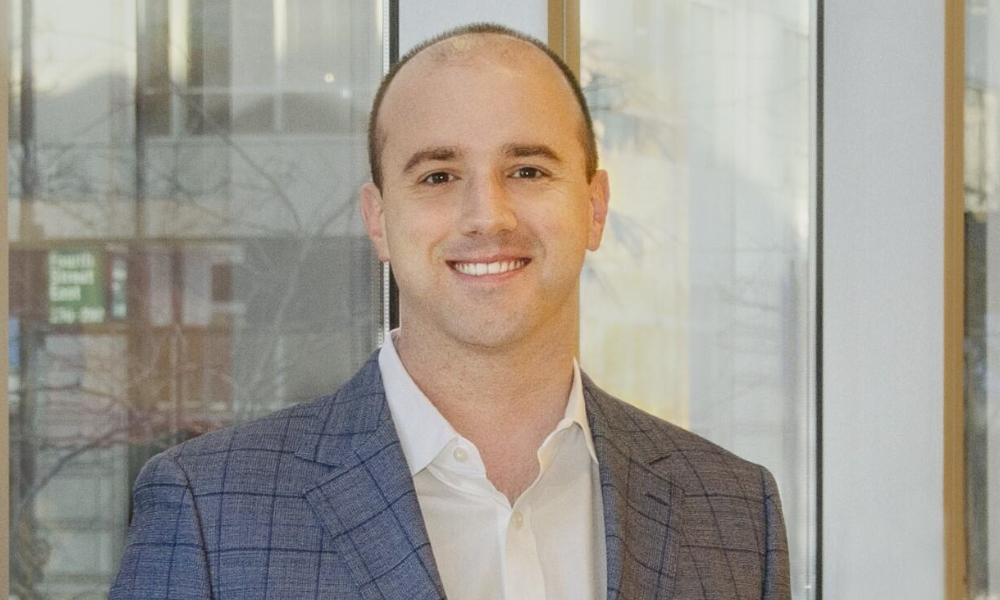There are major openings for brokers in the non-QM space, however

The non-QM (non-qualified mortgage) space has experienced significant growth in recent years, and Tim O’Brien (pictured), mortgage broker at Zipfel Capital, has been at the forefront of this shift. As traditional lending standards tighten, O’Brien notes that the non-QM space offers flexibility for clients who don’t fit the conventional mold.
“Lending standards have not changed,” he said, emphasizing how the rigorous requirements of conventional mortgages can be especially limiting in today's high-rate environment.
For Zipfel Capital, adapting to this shift has meant expanding its offerings to meet the needs of a broader range of clients.
“We’ve adapted by adding a multitude of lenders and, you know, specific products that kind of service that space,” O’Brien stated. “The debt service coverage ratio program, DSCR, has been a huge product for us.”
Non-QM products have also proven invaluable for business owners and self-employed individuals, especially those who may not have the two-year tax history typically required for traditional loans.
“This product is fantastic because... bank statement loans, where you’re able to qualify borrowers based on cash flow and bank statements, have been extremely helpful,” O’Brien explained. These products, while a far cry from the “no doc” loans of the pre-2008 era, still offer a way for borrowers with unique financial situations to secure financing. For business owners and 1099 earners who don’t meet the strict criteria of conventional loans, non-QM provides a critical lifeline.
Commercial market opportunities
The commercial real estate market, another key focus for O’Brien, has also undergone substantial changes.
“The commercial market has shifted tremendously,” he said. “Lenders are much more conscientious about the loans they’re making.”
This shift has forced lenders to become more conservative, and borrowers often find themselves needing to establish deeper relationships with their lenders, including setting up operating accounts or deposits.
“We’ve helped educate [clients]... you very likely have to establish a banking relationship with the lender,” O’Brien explained.
These changes have had a profound impact on sectors like multi-unit, mixed-use, and retail properties. Lenders are requiring more from their borrowers to mitigate risk, and Zipfel Capital has had to guide their clients through this new landscape.
“There’s been a lot of education that we’ve had to provide to clients,” O’Brien said, helping them understand the importance of maintaining close ties with their lenders. It’s not just about getting the loan anymore; it’s about fostering an ongoing relationship to ensure future financing is even possible.
This shifting market has also put a spotlight on the looming refinancing crisis. With an estimated $1.5 trillion in commercial loans set to mature before the end of 2025, according to Morgan Stanley, many commercial property owners are facing an uncertain future.
“Those are all loans that have been made either at the beginning of the pandemic or pre-pandemic,” O’Brien said, highlighting how the market dynamics have drastically changed since these loans were originated.
For clients with loans maturing in the next few years, O’Brien’s advice is clear: preparation is key. “The message we’re passing along to customers is to communicate with your lenders... get your house in order,” he said.
This preparation extends beyond just paperwork—it's about preparing for a future in which loan-to-value ratios (LTVs) are shrinking.
“In a lower rate environment, lenders were comfortable with a 75 to 80% loan-to-value,” O’Brien explained. “In this environment with cash being tight on lenders’ balance sheets... we’re seeing lenders be more conservative. We’re forecasting that there’s going to be scenarios where you have property owners and investors that may be forced to turn keys back over to banks.”
The commercial real estate sector, particularly office space, is dealing with another challenge: the drastic shift in demand post-pandemic. The rise of remote work has reduced the value of office space in many markets, compounding the issues property owners face.
“If you own an office space and... have 40% vacancy... that asset is probably not worth as much as it was when the asset was purchased,” O’Brien pointed out. The valuation shifts, combined with tighter lending standards, have created an environment where commercial real estate owners are facing unprecedented challenges.
Through all these changes, O’Brien and Zipfel Capital have maintained a focus on providing strategic advice to their clients. Whether it’s through educating them on the nuances of non-QM lending or preparing them for upcoming refinancing hurdles, their approach is built on helping clients navigate an increasingly complex and volatile market.
“It’s an ongoing communication,” O’Brien added, making it clear that staying informed and prepared is crucial for anyone looking to succeed in today’s commercial real estate and mortgage markets.



